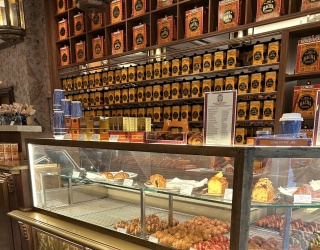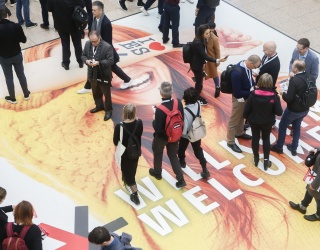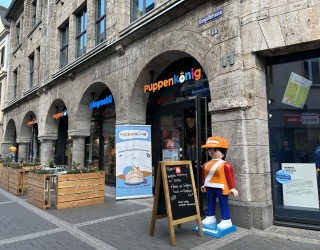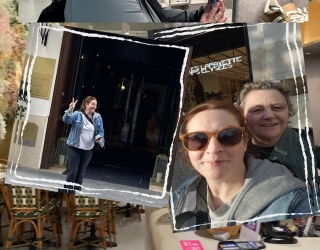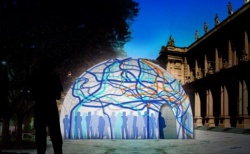
Light has long been an important tool for merchandise presentation in retail. Since the invention of gas lamps, new technical developments were used for store layouts as soon as possible. Now however, it is no longer just about a set lighting atmosphere. Light should be changeable – during the course of the day and depending on the season. That is why at the light+building trade show, retail does not just look at new light fixtures, but also at what is new in terms of lighting control technology.
Scenographic light or light that changes depending on the season or time of day make quick changes in shop design possible. Where you needed a new wall color, new flooring or shelves in the past, these days modern staging with different colors of light or varying intensity of light will do the job. Behind all this are new lighting control systems. Dr. Jürgen Waldorf explains the advantage of BUS lighting technology and DALI in our iXtenso interview on this focal topic. In our second interview, we are trying to find out how far along the development in organic–light emitting diodes, the so-called OLEDS is by now.
EHI: More natural light and more efficient lighting fixtures
Despite all of the enthusiasm over the new technical possibilities: lighting also remains a cost factor. To cut energy costs, retailers particularly want to invest in lighting that is more efficient. This was evident in the EHI study titled ”Energy management in Retailing 2011“. For 77 percent of surveyed commercial enterprises, energy costs increased in 2011 and a further increase of more than 10 percent is expected for the next few years.
The amount of energy costs depends on the industry sector. Just like in the previous year, non-food retail spends around 32 Euros per square meter of sales area annually on energy. At 57 percent, the cost for lighting makes up the largest portion. The propensity to invest in this area is considerable. 93 percent of all retailers surveyed want to spend more money in this area – that’s 15 percentage points more than in the previous year. As concrete measures for energy optimization, the focus is even stronger than in the prior year on energy efficient lighting fixtures, lighting control based on current daily lighting conditions and the use of natural light.
According to the EHI Retail Institute, the companies surveyed in this study cover approximately 37 percent of retail sales in the so-called DACH region of Europe (Germany, Austria and Switzerland). 59 percent of this number is attributed to non-food retail and 41 percent to food retailing. The smaller retailers empirically are more non-homogeneous. Innovation drivers are seen alongside many, especially owner-managed specialty stores with investment backlog.
light+building: Showcase and Idea Generator
For all of these people, the light+building trade show from April 15 – 20 is an exciting event. Digital lighting control and energy-efficient lighting are the most important topics at the trade show in Frankfurt, Germany. iXtenso offers a focal point on this subject.
At the same time as this trade show, the “Building Performance Congress“ affords the opportunity to obtain some know-how and engage in conversations about the topics of lighting and integrated building technology. At the ”Light Forum“ on April 16 and 17, it’s all about efficient lighting and creative lighting control.
On the first day, the U.S based LEED Certification takes center stage at the Light Forum. Energy efficiency is not just a buzzword. Aside from EU regulations and their implementation into national legislation, there are clear, concrete defined regulations, planning today is based on. The LEED standard is also being used more and more in Europe, for instance during the new construction of the headquarters of the Süddeutscher Verlag in Munich or the renovation of the skyscrapers of the Deutsche Bank in Frankfurt, that are LEED certified. On the second day, the focus will be on LEDs. Many exhibitors promise many things – but what can you believe in and what should you pay attention to? This also includes a guided trade show tour with the attending lighting designers to see new products firsthand.
Luminale: Lighting ideas in the city
For the sixth time, the Luminale extends the trade show into the evening and night hours. Bus routes connect the venues with one another. Streets and town squares, high-rise buildings and churches, museums and galleries from Offenbach to Mainz present themselves in a different light. The trend towards projections onto buildings and interactive installations is also present at this Luminale. The digitization of light, already presented many years ago at the Luminale, is growing ever larger. Nearby the Senckenberg Natural History Museum, a large-scale ambient light and sound presentation by Philipp Geist can be seen and heard.
Media facades from the Zeil Gallery (Zeil Galerie) in Frankfurt, all the way to the Sparda-Bank, the presentations at Tower 185 and the Taunustor (Taunus Gate) highlight the entire scope of design possibilities. The Städel Schule (Städel School) hosts its own ”Media Facades Summit“ with the Belgian lighting designer Ben van Berkel as the keynote speaker.
Artists, designers and their installations explore the achievement potential of lighting control technologies, sensors and software and in doing so try out technologies that in turn are the basis for the industry to develop energy-saving and highly efficient products. Click here for the schedule.
Designers are definitely trailblazers for new technical possibilities. By and by mass-market products are developed based on their ideas. Dr. Armin Wedel, who researches the fields of application of organic light-emitting diodes (OLED) at the Fraunhofer Institute for Applied Polymer Research in Potsdam, also hopes this will be the case. In our iXtenso interview, he reports on new options for lighting design with OLEDs.
René Schellbach, iXtenso.com
01/04/2012





